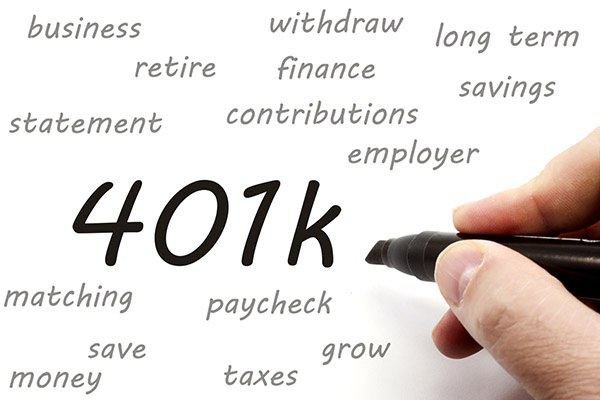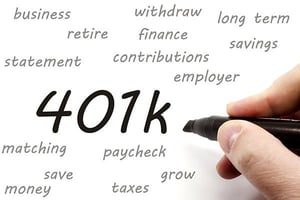How to Make the Most of Your 401(k)
August 31st, 2015 | 3 min. read

 Your 401(k) can be one of your most important financial tools for building wealth, as your money can grow tax free. What you need to do to seize all of the advantages your 401k has to offer depends on your age.
Your 401(k) can be one of your most important financial tools for building wealth, as your money can grow tax free. What you need to do to seize all of the advantages your 401k has to offer depends on your age.
To illustrate, let’s take a look at three members of the hypothetical Smith family. The Smiths live in Normalville, USA, and span three generations: Alfred, the patriarch, is 70 years old; Tom, Alfred’s son, is 50 years old; and Jane, Tom’s daughter, is 23 years old.
You can begin to utilize many of the benefits in a 401(k) early on in your career. But later in life you will have to make some decisions on how best to use your account. Here’s how the Smiths – and you – can get the most of a 401(k):
Jane Smith – Millennial 401(k) investor
Jane is fortunate to have landed a job right after graduation. She is also fortunate to work for an employer that provides benefits including a 401(k) plan. Her goal is to save for retirement while preparing for future life events such as getting married, buying a home and having children.
- Start early. The most important step as a recent graduate like Jane is to just start contributing to your 401(k). Automatically allocating a portion of your paycheck to a retirement account is a convenient way to save. And, the sooner you start, the better able you are to capture the impact of compounding, which means earning a return on the return of your assets.
- Get the full employer match. You should contribute at least enough to receive the full employer match, if available. That is essentially free money for your retirement.
- If possible, max out your 401(k). The maximum amount you are allowed to contribute to a 401(k) in 2015 is $18,000. Most people in Jane’s position can’t dedicate a large chunk of their salary to retirement while trying to get on their feet. But, with some skillful budgeting, you can still get ahead.
- Minimize fees. Your 401(k) balance is reduced by the costs you pay on your investments and to administer your account. Consider fees when choosing your investments. The more you pay, the less you keep of what you earn.
- Leave it alone. Avoid withdrawing money from your 401(k) early at all costs. Savers can be tempted to use their savings for a variety of reasons, such as a down payment on a house or in an emergency. The penalty for doing so is steep. If you withdraw money from a retirement account before the age of 59 1/2, you may be subject to 10% early withdrawal penalty. That’s on top of the tax you will have to pay on the distribution.
Tom Smith – Gen X 401(k) investor
At age 50, Tom is near the peak of his career. Now that his adult children are out of the house, his focus is primarily on retirement. Unlike his daughter Jane, however, he did not start saving for retirement as soon as he entered the work force.
- Make catch-up contributions. Older savers have the special benefit of contributing more to their 401(k)s. In 2015, workers age 50 or older are allowed to contribute up to $24,000. If you’re able, now is a good time to try to max out your 401(k) to help make up any lost ground.
- Consider IRAs and Roth IRAs. Contributing to other retirement accounts such as traditional IRAs and Roth IRAs can give you additional firepower in retirement. These accounts have their own advantages depending upon your modified adjusted gross income and eligibility. Roth IRAs, for example, allow you to make withdrawals tax free; although, you don’t get the upfront tax break on contributions as you do in a 401(k).
- Have a financial plan. At Tom’s age, you’re likely to have a list of prioritized financial goals including retirement. A financial plan can put you in a better position to achieve them. An HSBC study found that those with financial plans amassed nearly 2.5 times more retirement savings than those without a plan. Further, 44% of those with a financial plan saved more money each year for retirement.
Alfred Smith – Retired Baby Boomer
At age 70, Alfred has worked longer than the average worker. The average retirement age among American retirees in a 2014 Gallup poll was 62. Throughout his long career he has worked for the same company. Even though he has left the workforce, he must decide how best to put the 401(k) from his former employer to use.
- Roll it over, keep it put or cash it out. Rolling over a 401(k) into an IRA is a common procedure among retirees. It gives you more control over your account and likely access to a greater number of investments. In some cases, it is also a convenient way to consolidate several 401(k)s from numerous employers.
If, however, you have a good 401(k) plan, or would rather avoid potential transaction fees and taxes from moving your money, you may choose to leave it where it is.
Finally, retirees have the option of cashing out their 401(k)s. This is likely a choice of last resort, as it can potentially trigger a large tax event since you’ve accumulated a significant pool of money. Plus, cash is unable to generate growth like investments such as stocks and bonds.
Ultimately, there is no one-size-fits-all solution. It depends upon your personal situation. Alfred and recent retirees are best to seek the counsel of their financial adviser. - Take RMDs. When you turn 70 ½, you must withdraw a certain amount each year from your traditional retirement accounts. These are known as required minimum distributions, or RMDs. Failing to do so can result in a 50% penalty on your RMD amount. Roth IRAs, on the other hand, have the advantage of being exempt from RMDs.
